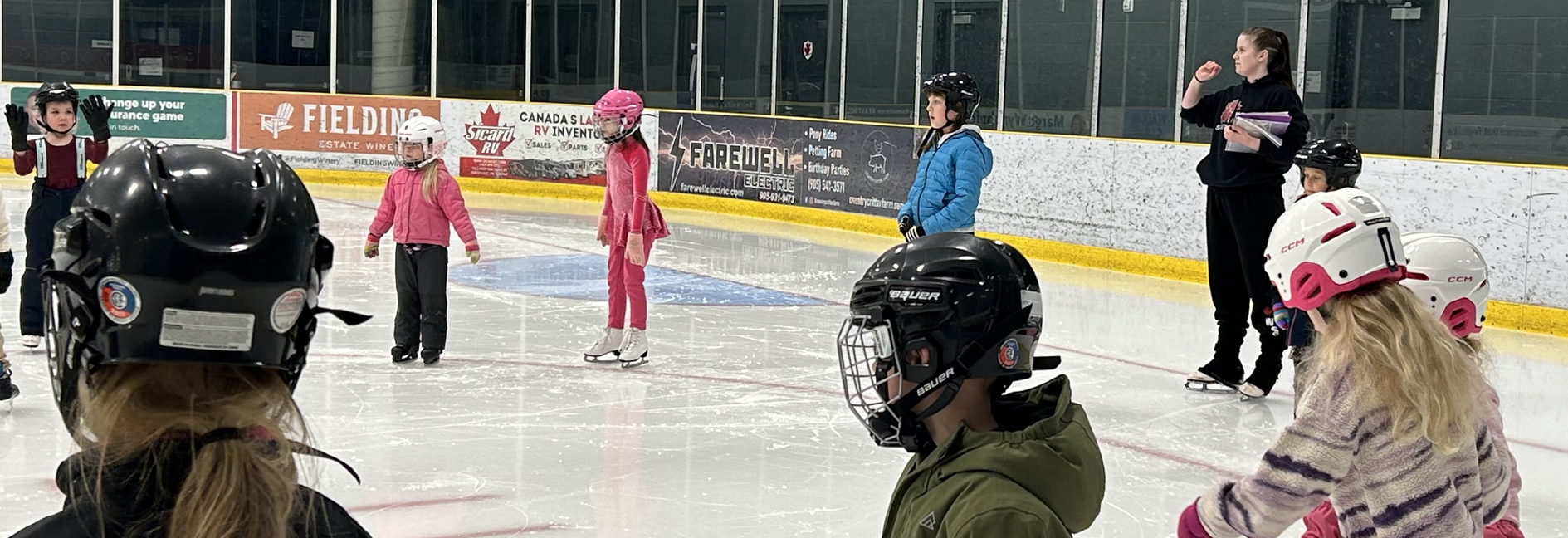West Lincoln Skating Club • Inspiring our skaters to experience the joy of skating for 50 Years and counting!
WINTER SESSION REGISTRATION IS OPEN! REGISTER NOW!

Skates
Skaters attending our session will have more fun and advance faster if they are properly and safely equipped. This means making sure that:
• Skates should fit comfortably. Walk around in the skates. Ankles should not wobble.
• Molded (Plastic) boots are discouraged
• There is room for toes to wiggle slightly
• Heels do not lift inside the skate more than ¼"
• An adult finger can fit in the top of the boot when done up
• There should be no looseness or creases in the boot. The tongue should be well padded and wide enough to cover the front of the ankle and stay in place.
Skate Care
To protect the skate blades, skate guards should be worn in any area that is not protected by rubber mats. At the end of every session the blades should be wiped with a dry cloth to prevent rusting. Skate sharpening should be done periodically.
**Reminder: Skates should be sharpened immediately after purchase**
• Re-sharpen skates after approximately 20 hours of skating
• More frequent sharpening may be required if the skater walks on concrete, rubber or carpeted surfaces without guards, if the blades are not wiped dry, or if there are severe nicks and rough surfaces on the edges of the blade.
• Never store skates with hard guards on to prevent rust.
• The bottom pick should NOT be removed – the pick is part of the design of figure skates and is essential to proper balance.
Helmet Policy
All Skate Canada member clubs and skating schools must ensure all CanSkate and Star program participants wear a CSA approved hockey helmet while on the ice until they are cleared to remove it by the Club Head Coach.
Helpful Hints:
• A hockey helmet should fit snug to prevent any shifting and maximizing protection
• The chinstrap should be adjusted so it gently makes contact under the chin when fastened.
• The helmet should rest on the head so that the rim is one finger width above the eyebrow and making contact with the top of the head
• All CSA certified helmets have a sticker indicating their certification
• Face masks are not mandatory; however young skaters may benefit from the added protection
Canadian Standards Association (CSA)
Hockey helmets and face protectors sold in Canada must meet safety standards set by the CSA. If the CSA sticker is not present, throw the helmet away. Hockey helmets last for about 3-5 years. Hockey helmets should not be used if previously subjected to a major impact or if older than 5 years, or if showing visible damage or if parts are missing. Hockey helmets must have labeling with the date of manufacture and have a chinstrap.
Clothing
Skaters should dress warmly for our sessions; however, some items such as long drawstrings, scarves, dangling coat belts, etc. can be a hazard on the ice and should be avoided if possible. We recommend wearing mittens or gloves to keep skaters warm. Nylon material pants and mitts work well for those just starting out, fuzzy mitts may stick to the ice and leave hazardous lint behind.
